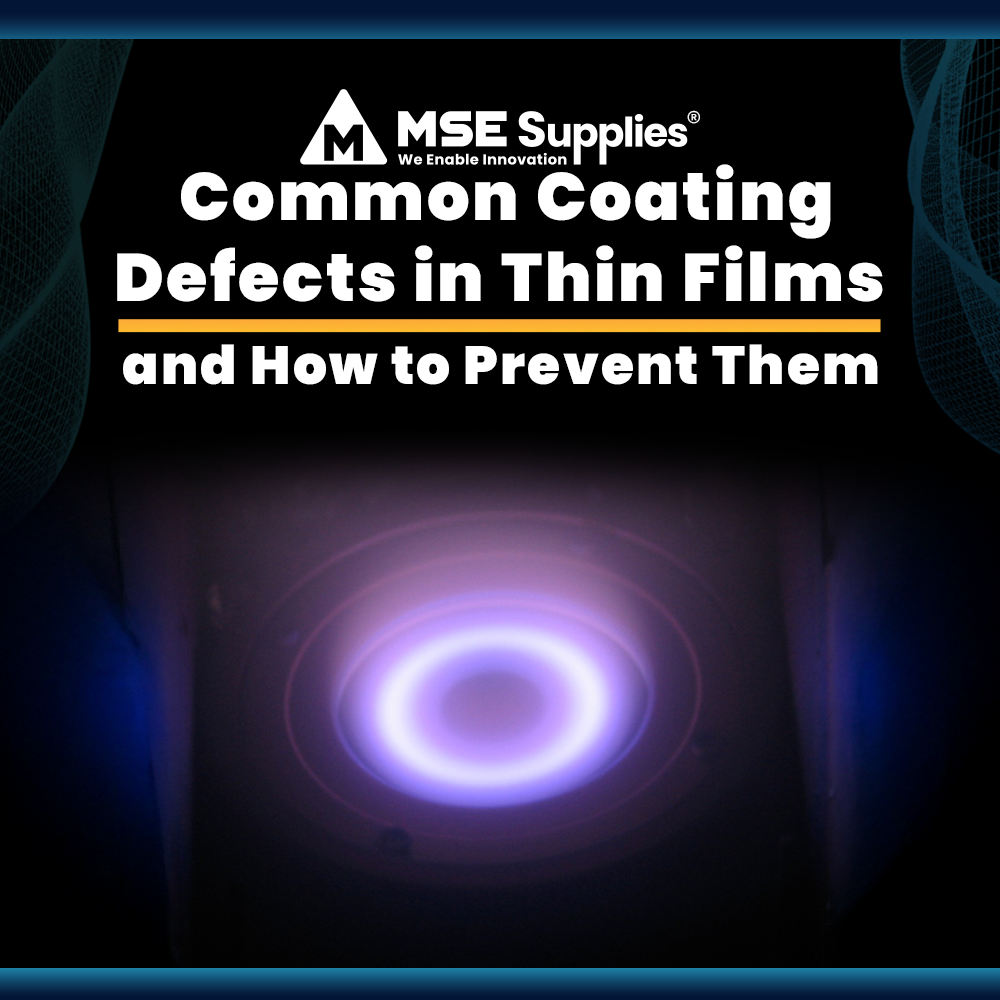Highly stable and efficient solid-state solar cells based on perovskite quantum dots (11.14% conversion efficiency at 1 sun illumination)
Posted by MSE Supplies on
The best-performing cell, which contains the FTO/Bl-TiO2/mp-TiO2+CH3NH3PbBr3 (~2-nm QDs)/PTAA/Au configuration shows the following results:
open-circuit voltage (VOC)=1.110 V,
current density (JSC)=14.07 mA cm−2,
fill factor=0.73
and an 11.40% PCE.

MSE Supplies is a leading supplier of both standard and custom-made FTO or ITO glass substrates for thin film solar cells research.
NPG Asia Materials (2015) 7, e208; doi:10.1038/am.2015.86
Published online 14 August 2015
Highly stable and efficient solid-state solar cells based on methylammonium lead bromide (CH3NH3PbBr3) perovskite quantum dots
Sawanta S Mali1, Chang Su Shim1 and Chang Kook Hong1
1Polymer Energy Materials Laboratory, School of Applied Chemical Engineering, Chonnam National University, Gwangju, South Korea
Correspondence: Professor Dr CK Hong, Polymer Energy Materials Laboratory, School of Applied Chemical Engineering, Chonnam National University, Gwangju 500757, South Korea. E-mail: hongck@chonnam.ac.kr
Introduction
Methylammonium lead halide (MAPbX) (X=I, Br or Cl)-based perovskite solar cells (PSCs) open new approaches for the fabrication of efficient and stable solid-state dye-sensitized solar cells. The pioneering work on alkali-metal lead and tin halides was performed by Wells.1 The chemical formula of the compound that he used was CsPbX3 (X=Cl, Br or I). However, 94 years later, D. Weber et al. successfully replaced cesium (Cs) with methylammonium cations (CH3NH3+) and studied various compositions of the first three-dimensional organic–inorganic hybrid perovskites by tuning their crystal structures and phases.2, 3 Specifically, MAPbBr3perovskite shows the cubic phase I (Pm3m), tetragonal phase II (I4/mcm) and orthorhombic phase IV (Pnma, Z=4) systems. This is a p-type semiconducting material with a direct band gap of 1.93-2.3 eV that corresponds to an absorption onset of  550 nm, which makes this material an excellent light harvester.4,5 After successful synthesis of CH3NH3PbI3 perovskite quantum dots (QDs), Im et al.demonstrated a 6.5% power conversion efficiency (PCE) via the ex situ method.6Degradation of perovskite in a liquid electrolyte was solved by Gratzel et al. in 2013 using solid-state PSCs with a 13% PCE.7
550 nm, which makes this material an excellent light harvester.4,5 After successful synthesis of CH3NH3PbI3 perovskite quantum dots (QDs), Im et al.demonstrated a 6.5% power conversion efficiency (PCE) via the ex situ method.6Degradation of perovskite in a liquid electrolyte was solved by Gratzel et al. in 2013 using solid-state PSCs with a 13% PCE.7
The perovskite degradation problem has been nullified by implementing solid-state hole-transporting material (HTMs), for example, 2,2′,7,7′-tetrakis-(N,N-di-p-methoxyphenyl-amine)-9,9′-spirobifluorene (spiro-MeOTAD).7 Thus, for the last 2 years, methylammonium lead halide perovskite semiconductors have enabled of low cost solution-processed photovoltaic technology. On average, the PCE is typically boosted to 16.6% (certified), with the highest reported efficiency of ~19.3% (uncertified) for a CH3NH3PbI3−xClx perovskite with a planar geometry and without an antireflective coating.8
Perovskite materials with different compositions have been successfully synthesized using in situ, ex situ, solvent engineering, compositional chemical management and vapor deposition techniques. Recently, Snaith et al. synthesized a mixed halide perovskite CH3NH3PbI3−xClx using the dual-source vapor deposition technique to fabricatea planar heterojunction PSC.9 An open-circuit voltage (VOC) of 1.07 V (the highest reported so far), a high current density (JSC) of 21.5 mA cm−2, and a 15.4%PCE were achieved. These results were achieved using the pinhole-free perovskite layer deposition technique, which enables thermal evaporation with a uniform HTM layer and a high diffusion length (LD; 1069 nm).9, 10 In addition, the VOC of the perovskite material can be controlled with electron-transporting layers (ETLs) such as TiO2, Al2O3 and Yttrium-doped TiO2 (Y-TiO2).8, 11 Y. H. Hu discussed the state of the art of novel meso-superstructured solar cells that are based on an insulating ETL (Al2O3) and a lead-free perovskite (MASnI3) for solar cell applications.12Recently, we have synthesized CH3NH3PbI3 perovskite nanoparticles from γ-butyrolactone solvent and successfully developed low temperature-processed one-dimensional TiO2 nanorod arrays with a 13.45% PCE.13, 14 Low temperature flexible PSCs have also been demonstrated by Yang et al. using phenyl-C61-butyric acid methyl ester (PCMB) as the HTM material, resulting in a 9.2% PCE.15 However, a uniform deposition and thickness optimization of the phenyl-C61-butyric acid methyl ester is difficult to achieve.16
Recently, Seok et al. demonstrated a 16.2% PCE using solvent engineering and toluene drip casting treatment for perovskite materials.17 This treatment helps to form an intermediate MAI–PbI2–dimethyl sulfoxide (DMSO) phase, which retards the rapid reaction between PbI2 and MAI during the evaporation step and results in a highly pure crystalline CH3NH3PbI3 perovskite layer. However, these devices suffer from a low fill factor (FF) and hysteresis issues. The optimization of each layer is a major challenge for MAPbI3-based PSCs, but the hysteresis issue can be solved by varying the thickness of the mesoporous TiO2 (mp-TiO2) layer. Seok et al. studied different compositions of methylammonium lead iodide (MAPbI3), formamidinium lead iodide (FAPbI3) and methylammonium lead bromide (MAPbBr3) as effective light harvesters for PSCs. From this study, they concluded that the incorporation of MAPbBr3 into FAPbI3 stabilized the perovskite phase of FAPbI3 and improved the PCE of the solar cell. The authors18 demonstrated a >18% PCE for mixed (FAPbI3)1−x (MAPbBr3)x, where x=0, 0.05 or 0.15. Therefore, a study of the bare MAPbBr3 perovskite will open new opportunities in the architecture design of bilayer PSCs. Moreover, a high FF and high stability are the most important key features of MAPbBr3-based PSCs. It is well known that MAPbX3 nanoparticles/QDs with sizes <10 nm enable the preparation of new device architectures that could further enhance solar cell performance and elucidate the perovskite operating mechanisms.19 Therefore, MAPbBr3 QDs-based PSCs open new approaches towards the development of stable and efficient solar cells. The optical properties of MAPbBr3 and MAPbI3 were investigated by Tanaka et al.20. It was determined that for MAPbBr3, the exciton binding energy and the exciton Bohr radius were 76 meV and 20 Å, respectively; for MAPbI3, the exciton binding energy and exciton Bohr radius were 50 meV and 22 Å, respectively.21 The absorption coefficients of MAPbBr3 and MAPbI3 are 105 cm−1 and >4.3 × 105 cm−1 (at 300 nm), respectively.
Cai et al. demonstrated a 3.04% PCE using poly[N-9-hepta-decanyl-2,7-carbazole-alt-3,6-bis(thiophen-5-yl)-2,5-dioctyl-2,5-dihydropyrrolo[3,4–]pyrrole-1,4-dione](PCBTDPP) as the HTM.22 However, the VOC can be tuned by the band gap and the HTM of the materials; the authors demonstrated a VOC of 1.15 and 1.3 V for PCBTDPP and N,N′-dialkylperylenediimide as the HTMs, respectively. Recently, E. Edri et al. demonstrated a 0.72% PCE with a VOC of 1.06 V using phenyl-C61-butyric acid methyl ester as the HTMs23 for MAPbBr3 PSCs. Moreover, Seok et al.demonstrated band tuning by incorporating MAPbBr3 (that is, Br doping) into MAPbI3 to achieve a PCE of 12.3% and a VOC of 1.13 V using polytriarylamine (PTAA) as the hole conductor.24 The incorporation of MAPbBr3 improved the VOCand the current density from 0.87 to 1.13 V and from 5 to 18 mA cm−2, respectively.
Im et al. fabricated a planar MAPbBr3 hybrid PSC using P3HT, PTAA and poly-indenofluoren-8-triarylamine (PIF8-TAA) as the HTMs. The MAPbBr3 perovskites were synthesized in a dimethylformamide solvent, and the influence of H2O content was studied. The authors showed a 7.3%, 9.3% and 10.4% PCE with a VOC of 1.09, 1.35 and 1.51 V for the P3HT, PTAA and PIF8-TAA HTMs, respectively.20 To the best of our knowledge, there are no reports describing the synthesis of the MAPbBr3QDs with <3 nm sizes in either the dimethylformamide or DMSO solvents that are used for the solar cell application.
In the current study, we report the preparation of highly stable and high conversion efficiency mp-TiO2-based solid-state PSCs using MAPbBr3 QDs. We synthesized highly crystalline MAPbBr3 QDs with different sizes by the ex situ process in a DMSO solution followed by crystallization on mp-TiO2. Two different types of HTMs, spiro-MeOTAD and PTAA, were used to study the performance of the solar cell devices. Because of the formation of very small (~2–3 nm) MAPbBr3 perovskite QDs, the current density was drastically increased to 14.07 mA cm−2. This resulted in an 11.14% conversion efficiency at 1 sun illumination. The resolution of the hysteresis issue is also discussed in detail.
Share this post
- Tags: Energy, FTO, ITO, solar cells



